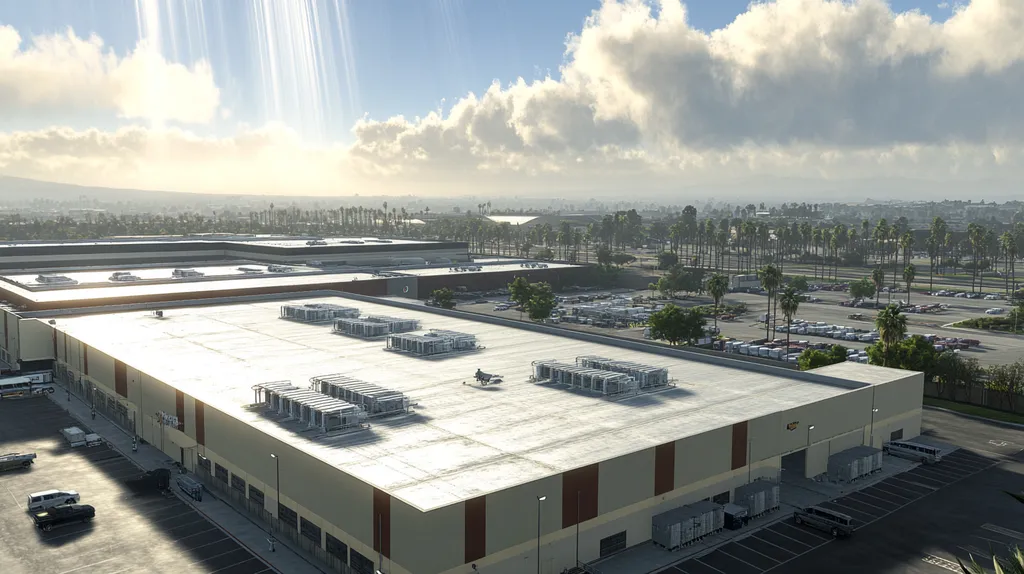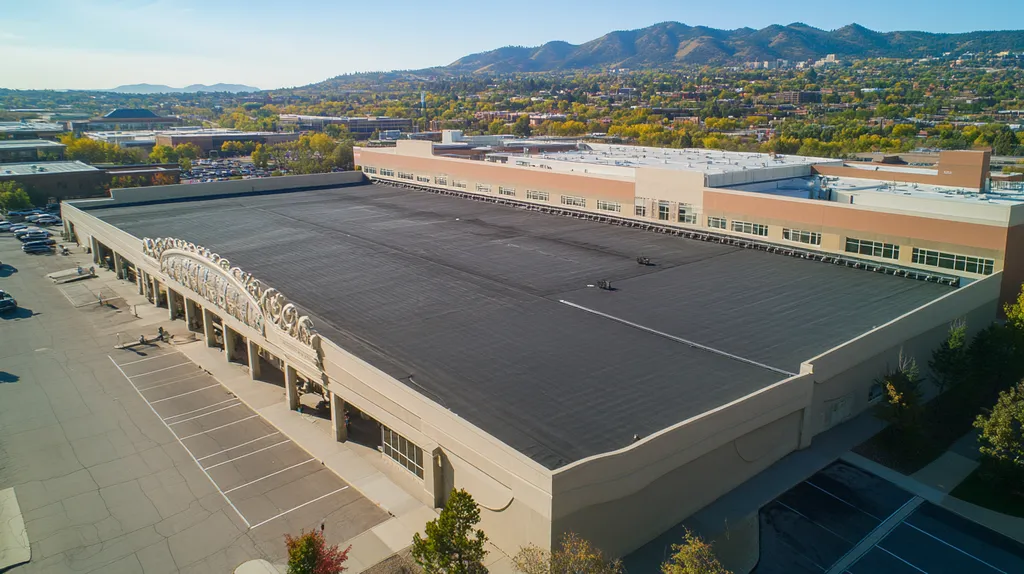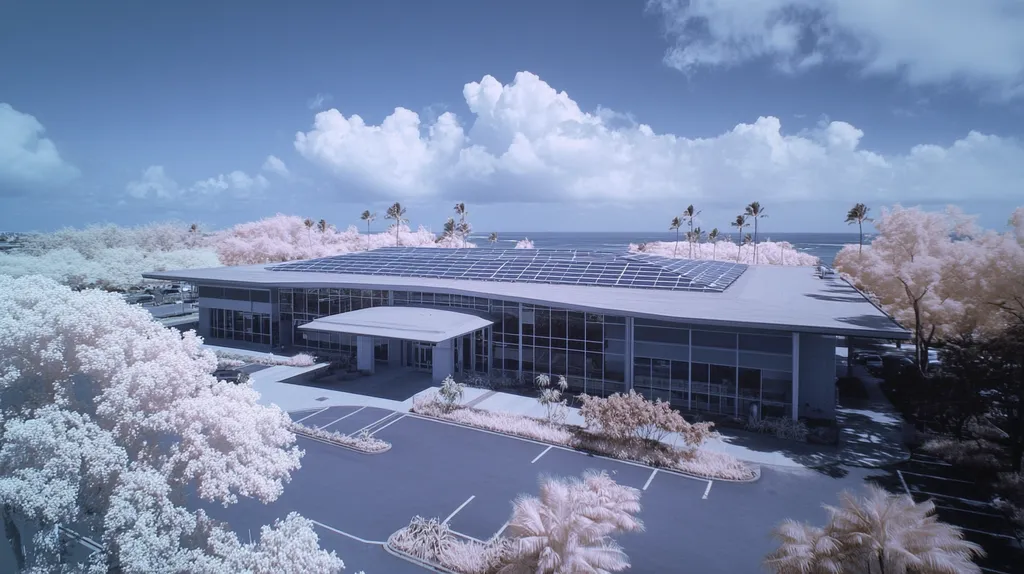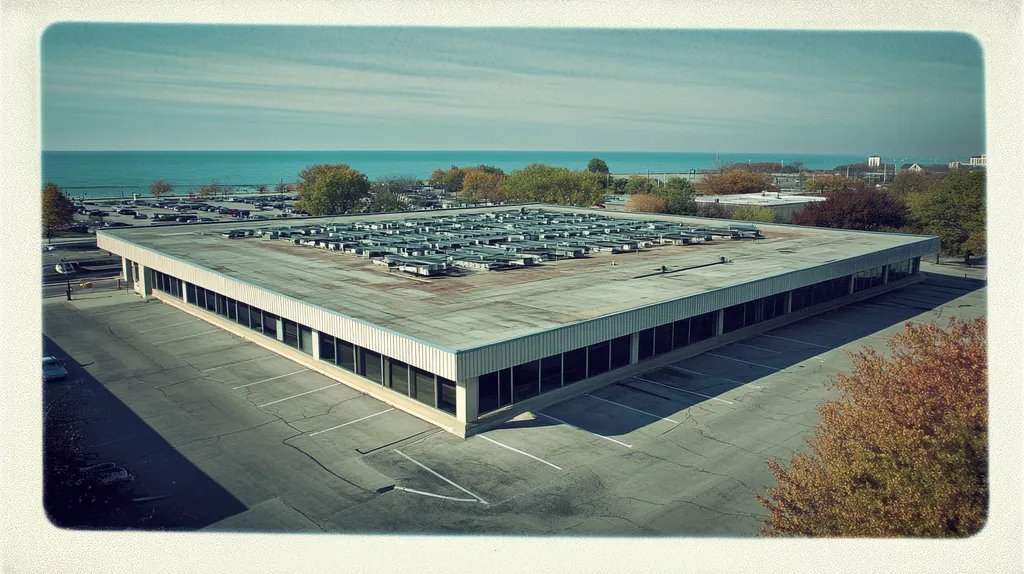Welcome to today’s Battle Royale featuring two roofing heavyweights: “Aerial Inspections” in the east corner versus “Ground Inspections” in the west!
Tonight’s showdown pits these contenders against each other across six punishing rounds designed to test every aspect of their performance for Industrial Roof Coating.
At stake? Millions in potential costs, decades of building protection, and the critical performance demands of modern commercial and industrial facilities.
Our professional judging panel will evaluate each round on technical merit, real-world performance, and value delivery. After all six rounds, we’ll declare our ultimate champion.
Ladies and gentlemen, facility managers and building owners… it’s time to rumble!
ROUND 1: INITIAL COSTS & INSTALLATION
When it comes to industrial roof coating inspections, the stakes are incredibly high. A single oversight can lead to premature coating failure, causing extensive damage and costly repairs that can exceed $100,000 for large facilities. The method chosen for inspection – aerial or ground-based – significantly impacts not just the immediate costs, but the entire coating application process.
Material Expenses
The combination of visual inspection and specialized testing is crucial for ensuring coating quality and longevity. Proper inspection methods directly influence material requirements and waste reduction. (source: InspecNet)
Aerial inspections utilizing high-resolution cameras and UV detection equipment provide precise measurements of coating requirements. This accuracy typically results in material savings of 10-15% compared to traditional estimates.
Ground inspections rely heavily on spot-checking and estimates, often leading to over-ordering of materials as a safety margin. This approach typically results in 20-30% excess material purchases.
ADVANTAGE: Aerial Inspections due to superior measurement accuracy and reduced material waste.
Installation Complexity
Installation complexity directly affects labor costs, quality control, and project success. Understanding the full scope of work before coating application prevents costly mid-project adjustments.
Aerial inspections create detailed surface maps and identify potential problem areas before work begins. This comprehensive view allows crews to plan efficient work patterns and staging areas.
Ground inspections often reveal unexpected issues during installation, forcing teams to adjust plans on the fly. This reactive approach can disrupt workflow and extend project timelines.
ADVANTAGE: Aerial Inspections for their ability to identify challenges before installation begins.
Project Timeline
Timeline efficiency impacts both direct costs and facility operations. Every day of coating installation affects normal business activities and exposure to weather risks.
Aerial inspections can survey large roof areas in hours rather than days. The rapid data collection and analysis allow projects to begin sooner and proceed with fewer interruptions.
Ground inspections require multiple site visits and manual measurements. This traditional approach extends both the preparation and installation phases significantly.
ADVANTAGE: Aerial Inspections for faster completion and reduced facility disruption.
ROUND 1 WINNER: AERIAL INSPECTIONS
ROUND 2: DURABILITY & LIFESPAN
Industrial roof coating durability directly impacts facility protection and operational costs. Poor coating performance can reduce a roof’s lifespan by up to 40% and lead to premature failure, causing extensive water damage and production disruptions. The inspection method chosen plays a crucial role in ensuring coating longevity and maximizing the return on your roofing investment.
Quality Control Methods
Proper quality control during inspection ensures coating uniformity and adhesion, which directly affect long-term performance. The selection of appropriate testing methods based on coating type and substrate materials significantly impacts durability outcomes.
Aerial inspections employ advanced imaging technology to measure coating thickness variations across the entire roof surface. These systems can detect application inconsistencies in real-time, allowing immediate corrections before problems become permanent.
Ground inspections utilize spot-checking techniques that may miss critical areas of inadequate coverage. This sampling approach increases the risk of coating failures between inspection points.
ADVANTAGE: Aerial Inspections for comprehensive coverage verification.
Defect Detection
Early identification of coating defects prevents moisture infiltration and substrate deterioration. Systematic inspection approaches are essential for catching problems before they compromise the roof system.
Aerial surveys create detailed surface maps that highlight potential trouble spots, including microscopic cracks and blistering. The comprehensive visual data allows for precise tracking of problem areas over time.
Ground-based methods rely heavily on visual observations from limited vantage points. This restricted perspective often results in missed defects, particularly in hard-to-reach areas.
ADVANTAGE: Aerial Inspections for superior defect identification.
Maintenance Planning
Strategic maintenance planning extends coating lifespan and prevents premature failure. Accurate condition assessment enables proactive repairs before small issues escalate into major problems.
Aerial inspection data provides trending analysis of coating wear patterns and degradation rates. This information enables precise scheduling of maintenance activities and budget forecasting.
Ground inspections offer detailed close-up examination of specific areas but struggle to establish broader deterioration patterns. This limitation hampers effective long-term maintenance planning.
ADVANTAGE: Aerial Inspections for data-driven maintenance strategies.
ROUND 2 WINNER: AERIAL INSPECTIONS
ROUND 3: PERFORMANCE FACTORS
Performance factors in industrial roof coating inspections can mean the difference between a coating that lasts 15 years and one that fails within 5 years. With coating failures costing facilities an average of $8-12 per square foot in repairs, choosing the right inspection method becomes critical. The stakes are particularly high for facilities over 100,000 square feet, where comprehensive inspection coverage directly impacts coating longevity.
Accuracy of Inspections
The key to preventing coating failures lies in the precision and thoroughness of the inspection process. Different coating types and substrates require specific testing methods to ensure proper evaluation and performance. The selection of appropriate inspection techniques directly impacts the coating’s long-term effectiveness and durability. (source: InspecNet)
Aerial inspections utilize thermal imaging and spectral analysis to create detailed surface maps. These technologies can detect moisture intrusion and adhesion issues across the entire roof surface in a single pass.
Ground inspections rely on direct physical testing and visual examination. While thorough for accessible areas, this method often leaves blind spots in hard-to-reach sections and at complex roof transitions.
ADVANTAGE: Aerial Inspections for comprehensive coverage and consistent measurement accuracy.
Safety Considerations
Safety risks during roof inspections pose significant liability concerns for facility managers. Even with proper fall protection, traditional inspection methods expose workers to numerous hazards.
Aerial inspections eliminate the need for personnel to access dangerous roof areas. Drones and remote sensing equipment can safely examine steep slopes, damaged sections, and restricted access zones.
Ground inspections require extensive safety equipment and protocols. Workers must navigate potentially unstable surfaces while carrying testing equipment and documentation tools.
ADVANTAGE: Aerial Inspections for minimal personnel exposure to roof hazards.
Time Efficiency
Inspection speed directly impacts facility operations and coating installation schedules. Extended inspection periods increase both direct costs and potential weather exposure risks.
Aerial platforms can survey massive roof areas in hours, delivering actionable data within 24 hours. This rapid assessment allows coating projects to begin quickly while minimizing facility disruption.
Ground methods require multiple days of physical inspection and manual documentation. The extended timeline increases labor costs and delays critical coating applications.
ADVANTAGE: Aerial Inspections for rapid assessment and minimal operational impact.
ROUND 3 WINNER: AERIAL INSPECTIONS
ROUND 4: MAINTENANCE REQUIREMENTS
Industrial roof coating maintenance represents a critical factor in protecting multi-million dollar facilities. Industry data shows that inadequate maintenance programs lead to coating failures in 35% of installations within the first five years, resulting in repair costs exceeding $250,000 for large facilities. The inspection method chosen directly impacts maintenance effectiveness and long-term coating performance.
Inspection Frequency
Regular monitoring of coating condition prevents minor issues from escalating into major failures. The frequency and thoroughness of inspections directly impact coating longevity and performance.
Aerial inspections enable rapid quarterly assessments without disrupting facility operations. Advanced imaging systems can track subtle changes in coating condition, allowing early intervention before visible damage occurs.
Ground inspections typically occur annually or semi-annually due to time and labor constraints. This extended interval between inspections increases the risk of undetected deterioration progressing to critical levels.
ADVANTAGE: Aerial Inspections for more frequent condition monitoring.
Detection Capabilities
Non-destructive roof moisture testing through various inspection methods provides crucial data about coating conditions without compromising the roof system integrity. These techniques help create comprehensive assessments that guide maintenance decisions. (source: Structura View)
Aerial systems utilize thermal imaging and spectral analysis to identify moisture intrusion and coating separation. This technology can rapidly survey large areas and detect subsurface issues before they manifest visually.
Ground inspections excel at close-range visual assessment and physical testing of coating adhesion. However, this method struggles to identify widespread patterns or systemic issues across large roof areas.
ADVANTAGE: Aerial Inspections for comprehensive detection capabilities.
Documentation & Tracking
Effective maintenance requires detailed documentation of coating conditions and deterioration patterns. Accurate records enable predictive maintenance and optimize repair timing.
Aerial inspections generate digital surface maps with precise location data for all findings. This documentation creates searchable databases that track changes over time and automate maintenance scheduling.
Ground inspections rely heavily on manual documentation and photography. While detailed, this approach makes it difficult to compare conditions across inspection cycles or identify gradual changes.
ADVANTAGE: Aerial Inspections for superior data management and trending analysis.
ROUND 4 WINNER: AERIAL INSPECTIONS
ROUND 5: SUSTAINABILITY CREDENTIALS
Sustainability in industrial roof coating inspections directly impacts both environmental footprint and operational costs. With commercial buildings accounting for nearly 40% of U.S. energy consumption, proper coating inspection methods can dramatically reduce energy waste and extend roof system lifespans. The stakes are particularly high for facilities over 100,000 square feet, where even small improvements in coating performance can yield significant environmental benefits.
Environmental Impact Assessment
The Cool Roof Rating Council’s evaluation standards for coating performance highlight the critical role of proper inspection in maximizing environmental benefits. Solar reflectance and thermal emittance measurements require precise assessment methods to ensure optimal energy efficiency. (source: Paint.org)
Aerial inspections utilize thermal imaging technology to map coating performance across entire roof surfaces. This comprehensive approach identifies areas of heat absorption and reflection with exceptional accuracy, enabling targeted improvements in thermal efficiency.
Ground inspections rely on spot testing that often misses subtle variations in coating performance. This limited sampling method frequently overlooks opportunities for environmental optimization.
ADVANTAGE: Aerial Inspections
Resource Optimization
Efficient use of coating materials and maintenance resources directly affects a facility’s environmental footprint. Proper inspection methods help minimize waste and maximize the effectiveness of sustainable coating systems.
Aerial surveys provide precise measurements and condition mapping that enable optimal material allocation. This data-driven approach reduces waste by identifying exactly where and how much coating material is needed.
Ground inspections often lead to overestimation of material needs due to limited visibility and access. This conservative approach typically results in excess material usage and disposal.
ADVANTAGE: Aerial Inspections
Long-term Sustainability
The durability and performance of industrial roof coatings significantly impact long-term environmental sustainability. Early detection of problems prevents premature coating failure and unnecessary material waste.
Aerial inspection systems track coating degradation patterns across entire roof surfaces. This comprehensive monitoring enables predictive maintenance that extends coating life and reduces replacement frequency.
Ground inspections provide detailed close-up analysis but struggle to identify broader deterioration trends. This limitation can lead to premature coating failure and increased material consumption.
ADVANTAGE: Aerial Inspections
ROUND 5 WINNER: AERIAL INSPECTIONS
ROUND 6: SPECIALIZED APPLICATIONS
When it comes to specialized industrial roof coating applications, inspection accuracy can mean the difference between success and catastrophic failure. For facilities with complex roofing systems, specialized coating applications often cost $15-20 per square foot – making proper inspection methodology crucial for protecting these substantial investments. The stakes are particularly high for manufacturing facilities where coating failure can compromise sensitive equipment or production processes.
Complex Substrate Assessment
The Cool Roof Rating Council’s evaluation standards highlight how critical precise assessment methods are for specialized coating applications. Proper inspection techniques must account for substrate composition, surface profile, and environmental exposure factors to ensure coating success. (source: Paint.org)
Aerial inspections utilize multi-spectral imaging to map substrate variations across large areas. This technology can identify subtle changes in surface composition and contamination that might affect coating adhesion.
Ground inspections allow direct testing of substrate conditions through adhesion tests and moisture analysis. This hands-on approach provides detailed data about surface preparation requirements but is limited in scope.
ADVANTAGE: Aerial Inspections
Environmental Control Verification
Specialized coatings often require strict environmental controls during application. Proper inspection methods must verify these conditions are maintained throughout the coating process.
Aerial systems can monitor temperature gradients and moisture conditions across entire roof sections simultaneously. This comprehensive view helps ensure optimal application conditions are maintained.
Ground inspections excel at spot-checking specific environmental parameters but struggle to maintain consistent monitoring across large areas. This limitation can lead to variations in coating performance.
ADVANTAGE: Aerial Inspections
Quality Assurance Documentation
Specialized coating applications demand extensive documentation for warranty compliance and quality assurance. The inspection method chosen directly impacts the completeness and accessibility of this critical documentation.
Aerial inspections generate comprehensive digital mapping with automated measurement tracking. This system creates searchable databases that streamline warranty documentation and quality verification.
Ground inspections rely on manual documentation methods that can be inconsistent and time-consuming. While detailed, this approach makes systematic quality tracking more challenging.
ADVANTAGE: Aerial Inspections
ROUND 6 WINNER: AERIAL INSPECTIONS
AND THE WINNER IS…
Ladies and gentlemen, after six grueling rounds of technical evaluation, we have our verdict…
In a stunning clean sweep across all categories, AERIAL INSPECTIONS claims the championship belt with decisive victories in cost efficiency, durability assessment, performance tracking, maintenance capabilities, sustainability credentials, and specialized applications!
The champion’s superior technology-driven approach dominated with breakthrough advantages in detection accuracy, safety improvements, and comprehensive documentation. Its ability to rapidly survey vast areas while identifying microscopic defects proved unbeatable in the industrial coating inspection arena.
Yet don’t count GROUND INSPECTIONS out completely. This veteran contender still excels in scenarios requiring detailed tactile testing or when dealing with smaller facilities where drone deployment may be impractical. Its hands-on approach remains valuable for specialized adhesion testing and close-range analysis.
*Important Notice: Every facility faces unique challenges based on location, design, and operational requirements. Local regulations, environmental conditions, and specific building characteristics all impact inspection methodology selection. This analysis provides general guidance but cannot address all variables. Always consult qualified roofing professionals who can evaluate your specific situation.*
In the high-stakes world of industrial roof coatings, champions are made by matching inspection methods to facility needs. Choose your contender wisely – your building’s future protection hangs in the balance!
FREQUENTLY ASKED QUESTIONS
Q. What are the costs of commercial roof inspections?
A. The initial costs vary based on inspection type. Aerial inspections, though often more expensive upfront, can lead to significant material savings and reduced repair expenses. Ground inspections may seem cheaper but can lead to costly over-ordering and disruptions, making it crucial to consider long-term expenses.
Q. How does inspection method affect industrial roof durability?
A. The inspection method dramatically influences coating durability and performance. Aerial inspections provide comprehensive coverage for measuring coating thickness, enhancing adhesion. Conversely, ground methods might miss critical areas, leading to reduced coating lifespan and increased risk of premature failure, impacting long-term facility costs.
Q. Which inspection methods ensure the best performance for commercial roofs?
A. Aerial inspections leverage advanced imaging technologies that provide more accurate assessments compared to ground inspections. This thoroughness ensures all areas receive shared attention, maximizing the coating’s performance and lifespan. By identifying early defects, aerial methods can extend the roof’s effectiveness significantly.
Q. How often should inspections be conducted for industrial roofs?
A. Regular inspections are critical for maintaining roof condition. Aerial inspections allow for quarterly assessments, identifying minute changes before they escalate. Traditional ground inspections often occur annually, leaving your roofing system potentially vulnerable to undetected deterioration that could lead to high repair costs.
Q. How do inspections affect the sustainability of roof coatings?
A. Proper inspection methods have significant impacts on sustainability. Aerial inspections can track thermal efficiency, improving energy conservation by ensuring optimal coating performance. Ground inspections may overlook critical areas, which leads to wasted materials and less effective environmental practices, ultimately harming long-term sustainability goals.
Q. What inspection method is ideal for specialized applications?
A. Aerial inspections are best for specialized applications due to their ability to map complex substrate variations and monitor environmental conditions simultaneously. This precision minimizes the risk of defects in application and ensures that all parameters align for successful project outcomes, particularly in sensitive manufacturing environments.
Q. What role does technology play in roof inspection methodologies?
A. Technology significantly enhances inspection efficacy, especially with aerial surveys. Tools like thermal imaging and spectral analysis provide detailed data on coating integrity and performance. Traditional methods may lack such precision, allowing technology-driven approaches to deliver more reliable assessments and effective maintenance strategies for commercial roofing.











